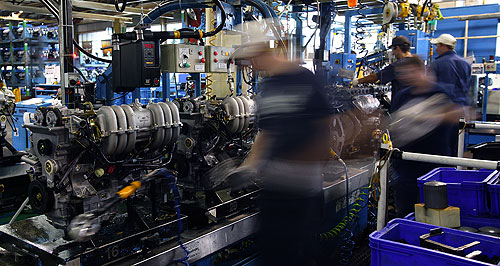Make / Model Search
News - General News - ManufacturingSwinburne pitches auto industry redundancy assistanceFresh start: Swinburne University has put forward a program to assist workers in the automotive industry succesfully move into other employment after taking a redundancy. A program to assist retrenched car industry workers is being pitched by Swinburne28 Jul 2014 By IAN PORTER MELBOURNE'S Swinburne University has launched a Redundancy Recovery program that has been designed to help displaced workers prepare for, and work through, the challenge of redundancy and finding a new job. The university will test the appeal of its new program in a special pitch to be made to 100 automotive industry workers at one of the three local car manufacturers, which has requested confidentiality. The OEM (original equiment manufacturer) session will also be used to gather feedback on the program, which can then be tweaked to improve its outcomes said Chris Pascuzzi, consulting director of the Redundancy Recovery program. It is not known yet whether the carmaker will endorse or support the Redundancy Recovery program. Mr Pascuzzi said it had been developed to meet the needs of many companies across the economy that are shrinking their workforces or closing altogether. The OEM exercise will raise the profile of the Swinburne program ahead of the waves of layoffs that will occur in the automotive sector from 2016 onwards, when Ford closes its local manufacturing operation, followed by Holden and Toyota in 2017. Mr Pascuzzi said the program differed from many in that it seeks to engage and assist workers while they are still employed, so they don’t find themselves in 2016 unemployed and having to start a job search from scratch. The program is a mixture of assessment and assistance spread over a 12-week period. It involves three separate one-day sessions, one at the start of each four-week period. Each session will be followed up with weekly webinars and some homework and each worker will be assigned a coach to assist with each phase of the program. “It’s not overwhelming by any means, but it means you’ve actually got some momentum happening around you for the next 12 weeks. It’s a bit different to just being left,” Mr Pascuzzi said. “What we are trying to do is some concrete assessment of the people up front. We want to be able to check for literacy and numeracy because some may have limitations in those areas.” The assessment phase will also include a Harrison Job Fit exercise to find a worker’s job preferences and what employment they would be suitable for. “We also look at what people might and could do in terms of retraining.” The second phase of the program focuses on a career review and working up a curriculum vitae and then learning about conducting a job search, the trends of the job market and key selection criteria. The third phase of the program includes mapping out a strategy with the assistance of a coach, both in tutorials and online. Mr Pascuzzi said he believed the assessment phase of the program would go deeper than the traditional out-placement services. “The reason we do that is that it is not a one-size-fits-all program. It’s not all white collar and certainly not all blue collar.” The Swinburne program was devised under the guidance of Helena Steel, who was in the human relations hot seat at Ansett when that company closed and let 17,000 employees go in 2002. “At the end of the 12 weeks we want them to be far more empowered than they have ever been,” Mr Pascuzzi said. The other key element is that Swinburne wants to conduct the program while the workers are still on the job. “What we are saying to the OEM makers is we can work with your people while they are still employed, because what we are trying to do is prepare a proper redundancy recovery program. “We will come in on site while people are still employed, get them engaged, get them working on the online program. “When their time comes in 2015 or 2017, they have actually had people working with them and coaching them towards a successful transition.” He said there was little danger of these newly empowered employees leaving early. “A lot of them will want to stay right through until the end because their redundancy payment requires they stay on. “But we don’t want them sitting around being captive in that process when we could be doing something constructive with them,” Mr Pascuzzi said.  Read more |
Click to shareGeneral News articlesResearch General News Motor industry news |












Facebook Twitter Instagram